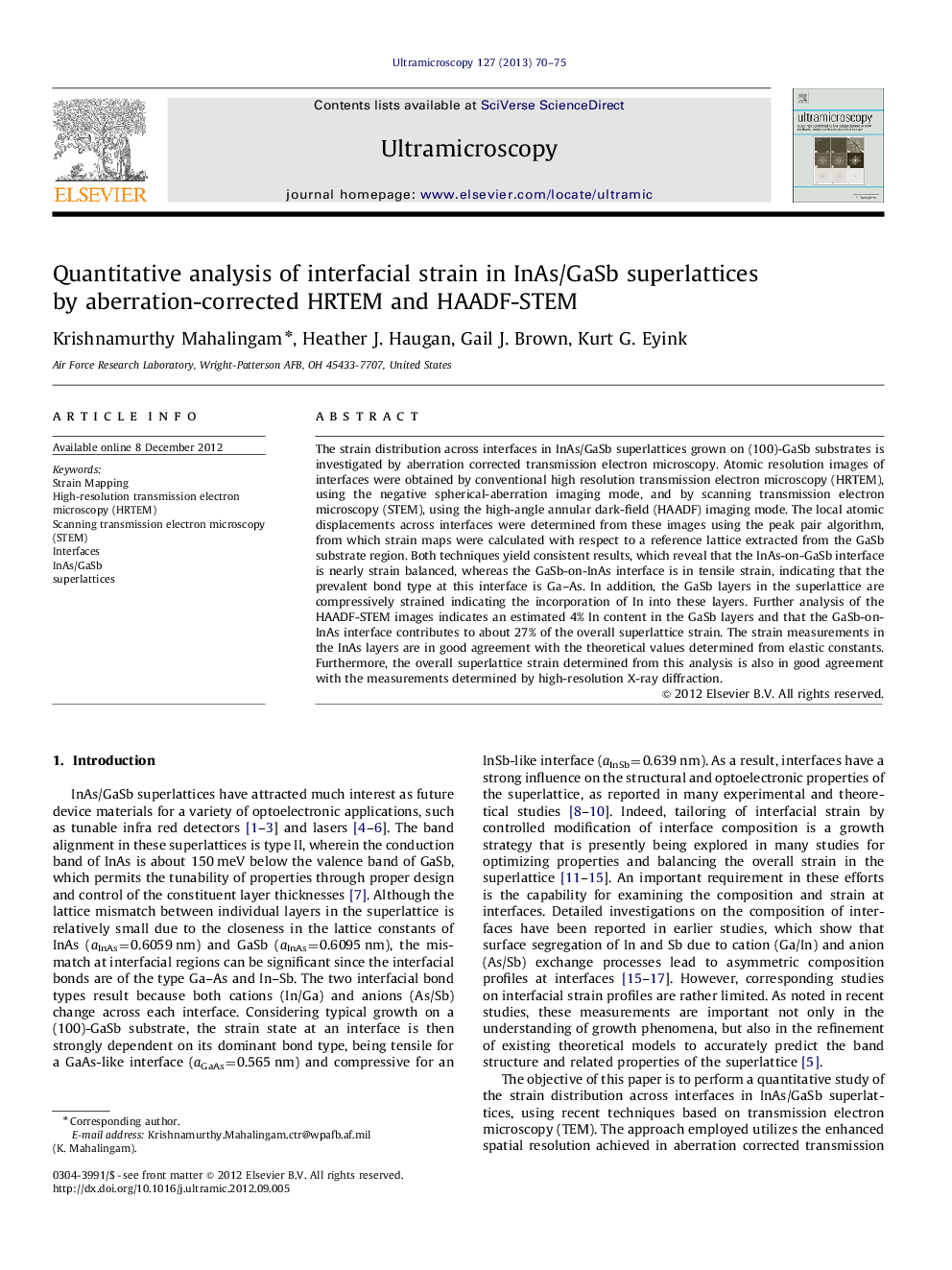| Article ID | Journal | Published Year | Pages | File Type |
|---|---|---|---|---|
| 1677483 | Ultramicroscopy | 2013 | 6 Pages |
The strain distribution across interfaces in InAs/GaSb superlattices grown on (100)-GaSb substrates is investigated by aberration corrected transmission electron microscopy. Atomic resolution images of interfaces were obtained by conventional high resolution transmission electron microscopy (HRTEM), using the negative spherical-aberration imaging mode, and by scanning transmission electron microscopy (STEM), using the high-angle annular dark-field (HAADF) imaging mode. The local atomic displacements across interfaces were determined from these images using the peak pair algorithm, from which strain maps were calculated with respect to a reference lattice extracted from the GaSb substrate region. Both techniques yield consistent results, which reveal that the InAs-on-GaSb interface is nearly strain balanced, whereas the GaSb-on-InAs interface is in tensile strain, indicating that the prevalent bond type at this interface is Ga–As. In addition, the GaSb layers in the superlattice are compressively strained indicating the incorporation of In into these layers. Further analysis of the HAADF-STEM images indicates an estimated 4% In content in the GaSb layers and that the GaSb-on-InAs interface contributes to about 27% of the overall superlattice strain. The strain measurements in the InAs layers are in good agreement with the theoretical values determined from elastic constants. Furthermore, the overall superlattice strain determined from this analysis is also in good agreement with the measurements determined by high-resolution X-ray diffraction.
►The strain distribution across interfaces in InAs–GaSb superlattices is examined. ► The GaSb-on-InAs interfaces are tensile, accounting for 27% of the overall strain. ► The InAs-on-GaSb interfaces are strain neutral. ► The GaSb layers are in compressive strain due to indium incorporation of about 4%. ► The strain in InAs layers is tensile, and is close to the bulk value of about 1%.
